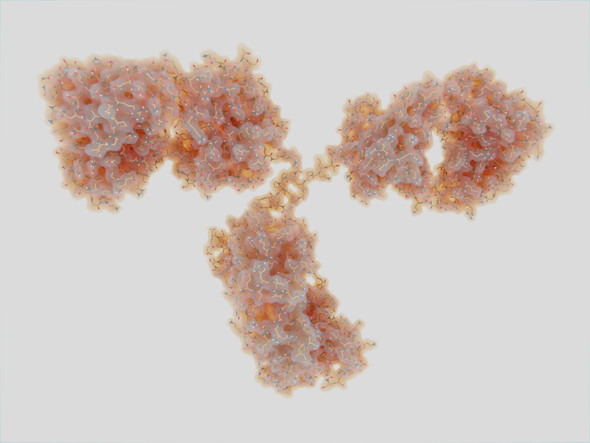Description
MOUSE ANTI-BOVINE CORONAVIRUS SPIKE ANTIBODY (5A4)
Mouse anti bovine coronavirus Spike antibody is a monoclonal antibody, specific for the Spike (S) protein of bovine coronavirus (BCoV), for use in ELISA, Western blot and immunofluorescence.
PRODUCT DETAILS – MOUSE ANTI-BOVINE CORONAVIRUS SPIKE ANTIBODY (5A4)
- Anti bovine coronavirus spike monoclonal antibody, clone 5A4.
- Isotype – mouse IgG1.
- Presented in PBS with 0.01% Sodium Azide.
- Suitable for use in WB, ELISA and IFA.
BACKGROUND
Bovine coronavirus (BCoV) belongs to the genus Betacoronavirus, a genus in the family Coronaviridae, comprising large, enveloped, positive-strand RNA viruses that have become increasingly important human and animal disease pathogens (Vijgen et al., 2006). BCoV consists of one serotype with some antigenic variation between different strains. The virus genome encodes five major structural proteins: the nucleocapsid (N), transmembrane (M), spike (S), small membrane (E), and hemagglutinin/esterase (HE) (Kumar et al., 2004). Both the S and HE glycoproteins hemagglutinate red blood cells by binding to N-acetyl-9-O-acetylneuraminic acid as a receptor determinant and produce virus-neutralizing antibodies. In addition, they are involved in determining the virus tissue and host tropism. The HE protein also acts as a receptor-destroying enzyme (RDE), serving as an esterase to reverse hemagglutination (HA) (Lai & Holmes, 2001).
BCoV is a pneumoenteric virus that infects the upper and lower respiratory tract and intestine. Virus is shed in feces and nasal secretions and infects the lung. It is the cause of 3 distinct clinical syndromes in cattle: calf diarrhea (CD), winter dysentery (WD) with hemorrhagic diarrhea in adults, and respiratory infections in cattle of various ages including the bovine respiratory disease complex (BRDC) or shipping fever of feedlot cattle. Infection normally occurs in calves between the ages of one week and three months which exhibit diarrhea, dehydration, depression, reduced weight gain and anorexia. Respiratory infection in the calf produces nasal discharge and its health can worsen with secondary bacterial infection. Adult infection is normally subclinical, except for winter dysentery, which affects housed cattle. Clinical signs include profuse diarrhea and a significant drop in milk yield. Acutely infected animals develop antibodies that persist for a long period, possibly for several years. However, the protective immunity is shorter and incomplete (el-Ghorr et al., 1989; Clark, 1993). BCoV is a member of the same species group as HCoV-OC43, a human coronavirus, whose zoonotic source has been speculated to include domestic livestock.
REFERENCES
- Lai, M. M. C., and K. V. Holmes. 2001. Coronaviridae: the viruses and their replication, p. 1163-1185. In D. M. Knipe, P. M. Howley, D. E. Griffin, M. A. Martin, R. A. Lamb, B. Roizman, and S. E. Straus (ed.), Fields virology, 4th ed., Lippincott Williams & Wilkins, Philadephia, Pa.
- Kumar S, Tamura K, Nei M. (2004). MEGA3: Integrated software for Molecular Evolutionary Genetics Analysis and sequence alignment. Brief Bioinform. 2004;5(2):150–163.













